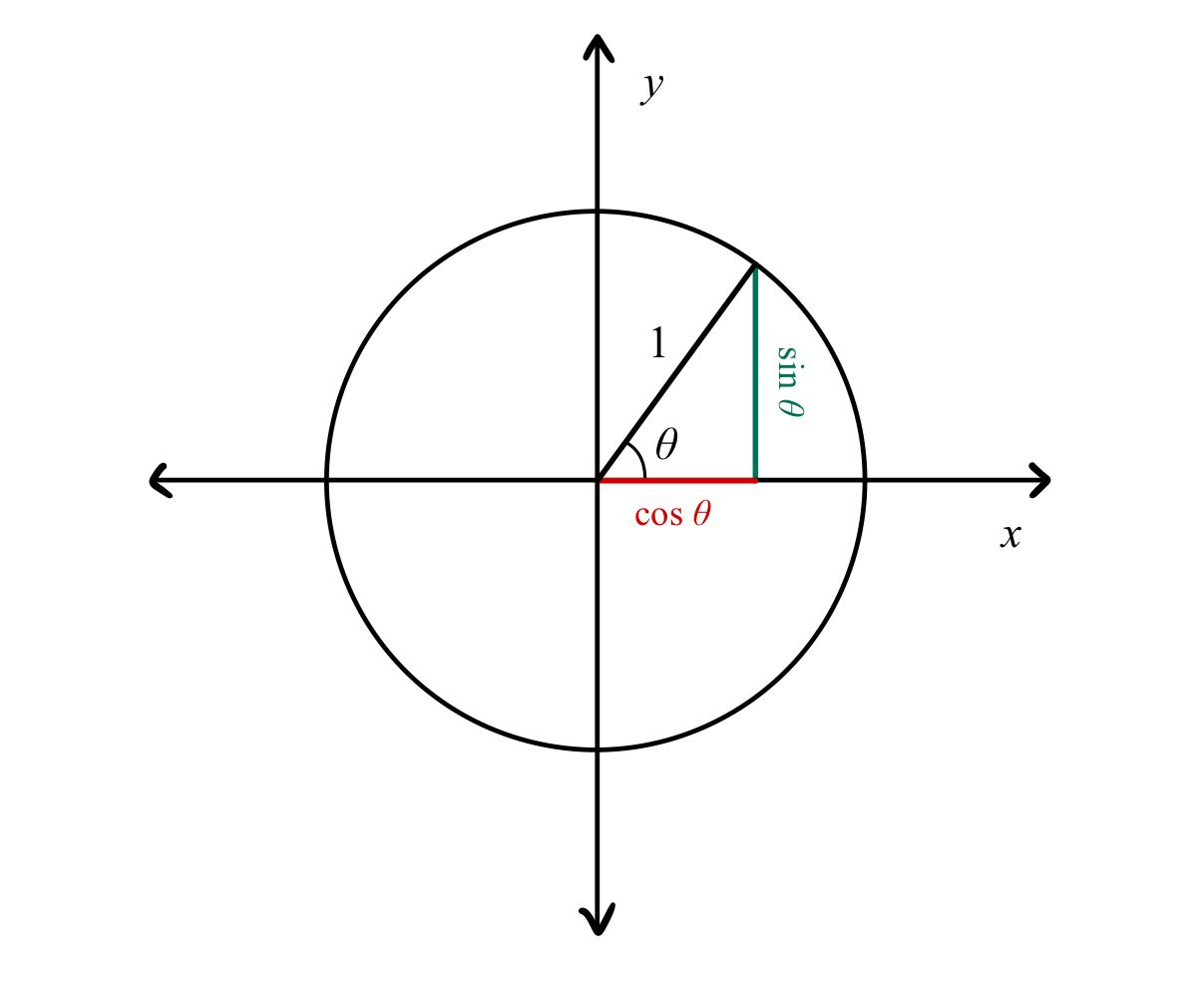Unit Circle Definitions and Exact Trigonometric Ratios
The Unit Circle
The unit circle is a circle with radius 1 centered at the origin (0,0).

On the unit circle:
- The x-coordinate is $\cos \theta$
- The y-coordinate is $\sin \theta$
- The slope of the radius line is $\tan \theta = \frac{\sin \theta}{\cos \theta}$
Remember that any point on the unit circle can be written as $(\cos \theta, \sin \theta)$ because the radius is always 1!
Unit Circle and Ratios
Depending on which quadrant $\theta$ is in, the values of $\sin \theta, \cos \theta, \tan \theta $ may change sign.
- Since $\sin\theta$ is correlated with the $y$-value of the point on the unit circle, $\sin\theta$ is positive in the first and second quadrants ($y>0$), and negative in the third and fourth ($y<0$).
- Since $\cos\theta$ is correlated with the $x$-value of the point on the unit circle, $\cos\theta$ is positive in the first and fourth quadrants ($x>0$), and negative in the second and third ($x<0$).
- Since $\tan\theta$ is correlated with the slope of the line to the point on the unit circle, $\tan\theta$ is positive in the first and third quadrants ($y/x > 0$) and negative in the second and fourth quadrants ($y/x < 0$).
Some students use the mnemonic "All Students Take Calculus" for which trigonometric functions are positive in which quadrants.
- All functions are positive in the first quadrant.
- Sine is positive in the second quadrant.
- Tangent is positive in the third quadrant.
- Cosine is positive in the fourth quadrant.

The Ambiguous Case of the Sine Rule
The sine rule states: $\frac{a}{\sin A} = \frac{b}{\sin B} = \frac{c}{\sin C}$
When using the sine rule to solve for an angle, we sometimes get two possible solutions. This is called the ambiguous case.
ExampleIf we know:
- Side a = 8
- Angle A = 40°
- Side b = 7
When solving for angle B, we get: $\sin B = \frac{7 \sin 40°}{8}$
This could give us two angles:
- B = 34.9°
- B = 145.1°
Both are valid solutions unless we have additional information!
Common MistakeDon't assume there's always only one solution when using the sine rule to find an angle. Check if you're in the ambiguous case!
The ambiguous case occurs when:
- You're solving for an angle using the sine rule
- The angle you're solving for could be acute or obtuse
- The given side is shorter than the side opposite to the given angle
To determine if both solutions are physically possible, check if they form a valid triangle by ensuring the third angle makes the sum 180°.
Understanding When Two Solutions Exist
For the ambiguous case to be possible:
- The side opposite to the unknown angle must be shorter than the side opposite to the known angle
- The known angle must be less than 90°
